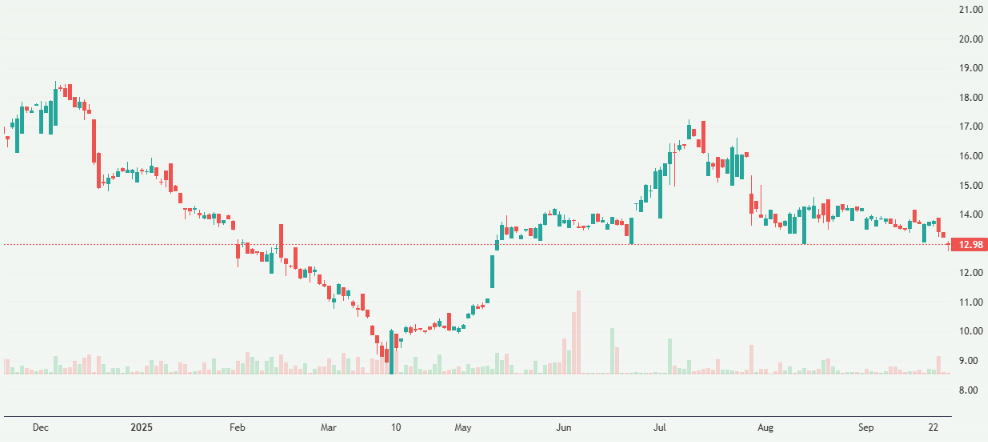Air Canada Shares Slip 2% After Cutting 2025 Forecast on Strike Disruption
Air Canada has faced turbulence in the stock market after announcing that ongoing labor strikes will impact its financial outlook for 2025. The airline’s shares slipped by around 2% following the revised forecast, as investors weighed the effects of prolonged disruptions on operations and revenue growth. For a company already navigating post-pandemic recovery and rising fuel costs, this development adds fresh challenges to its path forward.
Air Canada Lowers 2025 Forecast Amid Strike Impact
The airline cited worker strikes and operational slowdowns as the primary reasons for reducing its forecast. Labor unrest has forced Air Canada to cancel or reschedule flights, creating direct revenue losses and higher compensation costs. Additionally, delays in resolving disputes have pressured customer satisfaction, with many travelers opting for competitors.
Airlines rely heavily on uninterrupted schedules to maintain profitability, and even short-term strikes can have long-term consequences. The company noted that disruptions in the current quarter could ripple into 2025, making it necessary to scale back expectations for both revenue and passenger growth.
Stock Market Reaction to the Forecast Cut
The announcement triggered an immediate reaction on the stock market, with Air Canada’s stock slipping 2%. While the decline may appear modest, it reflects investor caution about the airline’s near-term stability.

Many analysts argue that airline stocks are particularly sensitive to operational risks. A single disruption, such as a strike or a spike in oil prices, can weigh heavily on investor confidence. Market watchers are also keeping an eye on AI stocks and other technology-driven sectors, which continue to attract investor capital during periods of volatility in traditional industries like aviation.
Broader Challenges Facing Air Canada
Beyond labor disputes, Air Canada faces several macroeconomic and industry-wide headwinds:
- Fuel Price Volatility: Rising oil prices remain a consistent challenge for airlines. Any increase in fuel costs directly cuts into profit margins.
- Competition: Rival carriers in North America are aggressively expanding routes and offering competitive fares, putting pressure on Air Canada’s pricing strategies.
- Operational Costs: Inflationary trends in labor, airport services, and maintenance add further strain to expenses.
- Global Uncertainty: Geopolitical tensions, fluctuating travel demand, and currency pressures complicate long-term planning.
Despite these hurdles, Air Canada continues to emphasize its recovery strategy, focusing on network expansion, customer service upgrades, and investments in modern aircraft.
Investor Sentiment and Stock Research Outlook
Recent stock research indicates that analysts are divided on Air Canada’s future. Some maintain a cautious outlook, suggesting that labor unrest could drag down profitability in the near term. Others believe the airline retains strong long-term fundamentals, particularly as international travel demand rebounds.
Investors seeking diversification may look at AI stocks or other sectors with fewer operational risks, though many still see value in airline equities once labor disputes settle. The key for Air Canada will be demonstrating resilience and improving labor relations to rebuild investor trust.
The Role of Labor Relations in Airline Stability
Labor relations are critical in the aviation industry, where pilots, flight attendants, and ground crews form the backbone of operations. Prolonged disputes often result in canceled flights, reduced customer loyalty, and weakened brand image.
For Air Canada, resolving strikes quickly is essential. The company has opened negotiations with unions, but achieving agreements that balance worker demands with financial sustainability is challenging. Many experts argue that a long-term labor strategy is needed to prevent recurring disruptions.
Comparison With Other Airlines
When compared with other global carriers, Air Canada’s situation is not unique. Airlines worldwide face similar challenges in balancing workforce expectations and operational efficiency. For instance, European carriers have also struggled with pilot strikes and wage disputes.
However, some competitors have managed to strike deals more swiftly, minimizing service disruptions. Investors often compare these outcomes when deciding whether to hold or reduce positions in airline stocks.
Long-Term Outlook for Air Canada
While the near-term picture is clouded by labor disputes, the long-term outlook for Air Canada remains tied to several factors:
- Recovery of International Travel: With borders open, global demand for long-haul flights is expected to increase.
- Fleet Modernization: Investments in fuel-efficient aircraft could reduce long-term costs and improve margins.
- Digital Transformation: Use of AI and data analytics in route planning, pricing, and customer service may enhance efficiency.
- Sustainability Goals: Airlines face growing pressure to cut carbon emissions, and progress on sustainability could influence investor perception.
Air Canada’s ability to manage these areas will determine whether it regains investor confidence in the coming years.
What This Means for Investors
For investors, the current situation highlights the importance of diversification and careful stock market analysis. Those holding Air Canada shares may need to adopt a long-term perspective, recognizing that short-term volatility is part of the airline industry.
Meanwhile, investors interested in stability may explore sectors such as technology, healthcare, or AI-driven companies, which are less exposed to operational disruptions. Conducting regular stock research and reviewing analyst reports can help investors make informed decisions.
Conclusion
The 2% slip in Air Canada shares following its 2025 forecast cut underscores the challenges airlines face in balancing labor stability with financial performance. While the strike disruption weighs heavily on short-term results, the company’s long-term growth will depend on effective labor negotiations, operational efficiency, and adaptability to global travel trends.
For investors, this development is a reminder that while airline stocks offer opportunities, they also carry significant risks. Careful research and a balanced portfolio remain essential in navigating such uncertain times.
FAQs
Air Canada reduced its forecast due to ongoing labor strikes, which have disrupted operations and increased costs.
Shares of Air Canada slipped about 2% as investors grew cautious about the near-term outlook.
Key risks include labor disputes, fuel price volatility, rising operational costs, and strong competition from other carriers.
Disclaimer:
This content is made for learning only. It is not meant to give financial advice. Always check the facts yourself. Financial decisions need detailed research.






